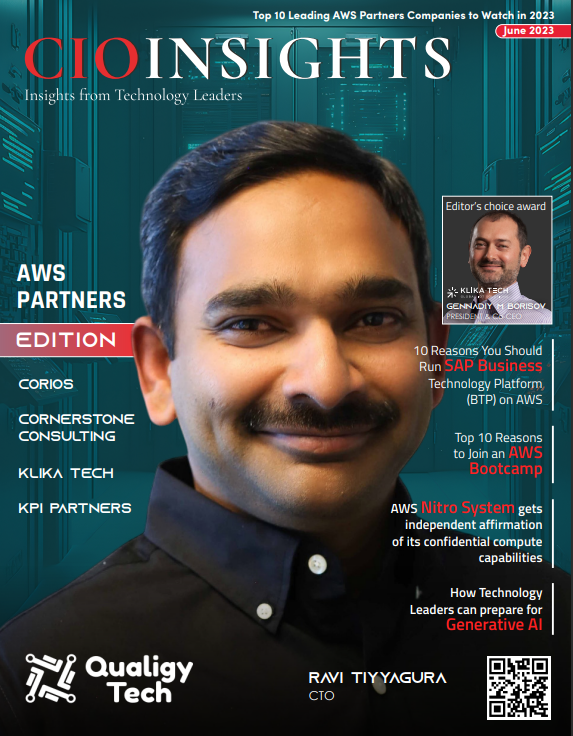The Future of Cyber Security

Cybersecurity used to exist in the realm of science fiction. Think retinal scans from Star Trek. I cut my teeth on Star Trek and I’m still holding out for a Tricorder during my lifetime.
In the present, we live a hyper-connected life, with technology informing everything we do. We use smart devices like phones and watches. Our appliances are connected to the Internet of Things. Our home security networks are connected as well, such as with Ring, Wink, Nest, Adobe iota.
So as we allow these new technologies into our homes, we give them access to the data that represents us. What we eat, what our fitness is like, what we wear. We want this data to be kept secure while still allowing access to it, so the devices can work and be improved upon. This information is secure, but not impervious to attack. Firewalls can stop many attacks, but greater security is warranted.
We have current features such as blockchain, which provides us with additional layers of security beyond a simple password. Blockchain makes it difficult to attack and go undetected. While blockchain is effective and powerful, it is not invulnerable.
With Cybersecurity featuring this week at Black Hat USA, the topic moves to the fore: what will Cybersecurity look like in the future? The science fiction security features of yesterday are here today. How can we extrapolate our current security measures for cyber in a way that protects us in both the near term and foreseeable future ten or more years down the line?
It seems obvious that artificial intelligence and machine learning are necessities for future Cybersecurity and increasingly we will pass the torch to AI rather than having people be the first line of defense.
Tom Byrnes, CEO of ThreatSTOP puts it this way, “In a world where armies of machines are under the control of adversaries, manual processes are too slow to update defenses. This will only get worse when there are more network-connected devices than people on the planet. To fight machines, you need to use machines. Using AI and Machine Learning on large datasets and the resulting event logs is the only way to move from a reactive, post-event inventorying of damage to prevention.”
“IN A WORLD WHERE ARMIES OF MACHINES ARE UNDER THE CONTROL OF ADVERSARIES, MANUAL PROCESSES ARE TOO SLOW TO UPDATE DEFENSES. THIS WILL ONLY GET WORSE WHEN THERE ARE MORE NETWORK CONNECTED DEVICES THAN PEOPLE ON THE PLANET. TO FIGHT MACHINES, YOU NEED TO USE MACHINES. USING AI AND MACHINE LEARNING ON LARGE DATASETS AND THE RESULTING EVENT LOGS IS THE ONLY WAY TO MOVE FROM A REACTIVE, POST EVENT INVENTORYING OF DAMAGE TO PREVENTION.”
It just makes sense. AI will be far more efficient at catching security breaches than any person, or even a team of cybersecurity experts. As a result of its efficiency, AI will be less expensive to implement, and once again more appealing to companies.
“Network security is already constantly 5 steps behind the attackers. So-Called ‘Threat Intelligence’ is mostly used for analyzing events after the fact. That isn’t “Intelligence”, it’s counting bodies. With the advent of 5G and the explosion in number and type of network connected devices, this becomes completely untenable. Intelligence, delivered timely, to enable enforcement in the network is a must, and the one common denominator that every device has to support is DNS, making that the ONLY way you will b able to address the issues,” says Byrnes
“NETWORK SECURITY IS ALREADY CONSTANTLY 5 STEPS BEHIND THE ATTACKERS. SO-CALLED “THREAT INTELLIGENCE” IS MOSTLY USED FOR ANALYZING EVENTS AFTER THE FACT. THAT ISN’T “INTELLIGENCE”, IT’S COUNTING BODIES. WITH THE ADVENT OF 5G AND THE EXPLOSION IN NUMBER AND TYPE OF NETWORK CONNECTED DEVICES, THIS BECOMES COMPLETELY UNTENABLE. INTELLIGENCE, DELIVERED TIMELY, TO ENABLE ENFORCEMENT IN THE NETWORK IS A MUST, AND THE ONE COMMON DENOMINATOR THAT EVERY DEVICE HAS TO SUPPORT IS DNS, MAKING THAT THE ONLY WAY YOU WILL B ABLE TO ADDRESS THE ISSUES.”
Predictive searches by AI could perhaps stop an attack just as it starts…or before it engages. It seems to be a safe bet that the largest companies will be ready with AI cyber defense, if they are not currently. Smaller companies will eventually join this endeavor as well.
Ben Desjardins, Vice President, Product Marketing, RSA says, “Organizations across the globe and in all industries are facing a new reality: traditional ways of doing business are being disrupted by digital technology. From IoT to Artificial Intelligence, cloud and more, the technology businesses adopted over the past decade has changed the way they operate and communicate with customers today.”
WITH INNOVATION COMES RISK
“With this innovation comes risk”, Desjardins warns, “and these risks – which can manifest themselves in a variety of ways – can gravely impact your business, if not managed appropriately.”
THERE’S A DARK UNDERBELLY TO DIGITAL TRANSFORMATION
“There’s a dark underbelly to digital transformation”, says Desjardins, “it’s a threat landscape that has multiplied, is increasingly vulnerable to malicious actors and could spell disaster for your business if left unchecked. The risk challenges organizations face today cannot be managed solely by a security or risk function. Today, cybersecurity and risk management must be a team sport where all levels – from the boardroom and down – are engaged and working to address and manage digital risk.”
“TODAY, CYBERSECURITY AND RISK MANAGEMENT MUST BE A TEAM SPORT WHERE ALL LEVELS – FROM THE BOARDROOM AND DOWN – ARE ENGAGED AND WORKING TO ADDRESS AND MANAGE DIGITAL RISK.”
Cybersecurity a team sport? Dejardins is of course, spot-on and yet, we’re not even close. We have a gaping wound of vulnerability within critical infrastructure that must be approximated between the private sector and government. Desjardins agrees, “To help mitigate the threats of tomorrow, both private and public sectors must evolve, and should embrace an integrated risk management strategy. In the digital world, there is no single risk profile that applies to every organization, which makes managing digital risk a complex challenge.”
“TO HELP MITIGATE THE THREATS OF TOMORROW, BOTH PRIVATE AND PUBLIC SECTORS MUST EVOLVE, AND SHOULD EMBRACE AN INTEGRATED RISK MANAGEMENT STRATEGY. IN THE DIGITAL WORLD, THERE IS NO SINGLE RISK PROFILE THAT APPLIES TO EVERY ORGANIZATION, WHICH MAKES MANAGING DIGITAL RISK A COMPLEX CHALLENGE.”
Bill Diotte, CEO of cyber security company, Mocana Corporation, says “We’ve got a lot of awareness around cyber threats and cyber attacks, but if you think of it, 90% of the critical infrastructures are owned and operated by private companies, so there’s a gap.” His point is well taken when we consider how the future of cyber security with our connected-everything world will behoove governments and the private sector to join forces and work together to secure the vast majority of our critical infrastructures.
“…90% OF THE CRITICAL INFRASTRUCTURES ARE OWNED AND OPERATED BY PRIVATE COMPANIES, SO THERE’S A GAP.”
Diotte says Mocana Corp. is actively involved in projects and internships with universities in an attempt to embrace the enthusiasm and creativity of other’s knowledge and enthusiasm for ensuring the safety of others. In a video interview with Bloomberg’s Breakaway, Diotte reports, “We’re looking for people to pick up a shield, envision themselves in the next Avenger’s movie, managing and defeating the [cyber] threats.”





